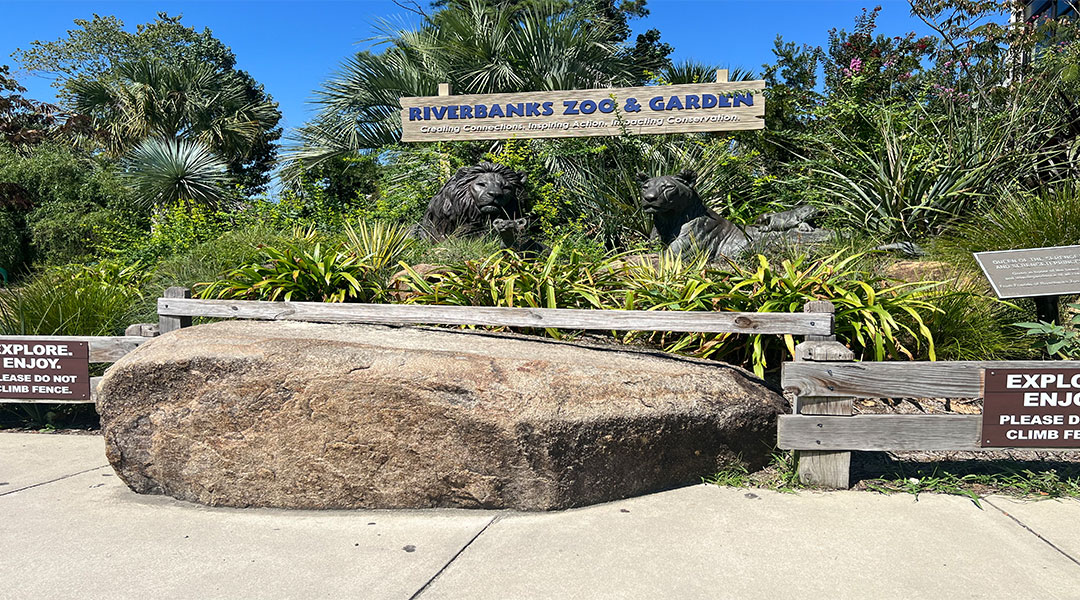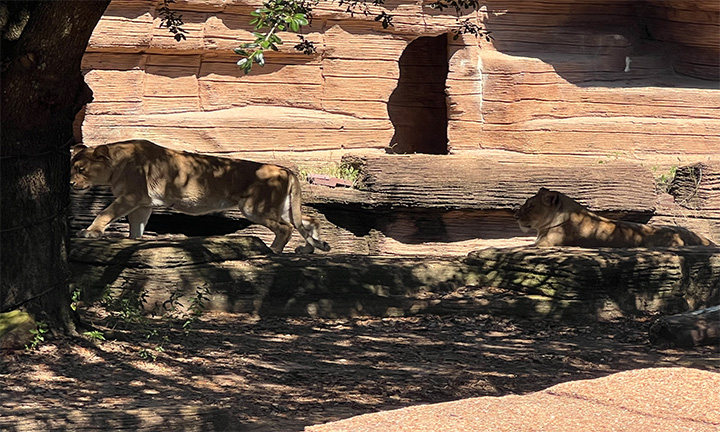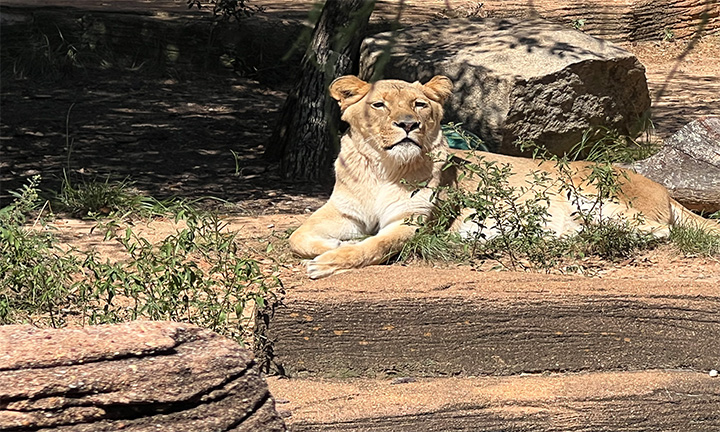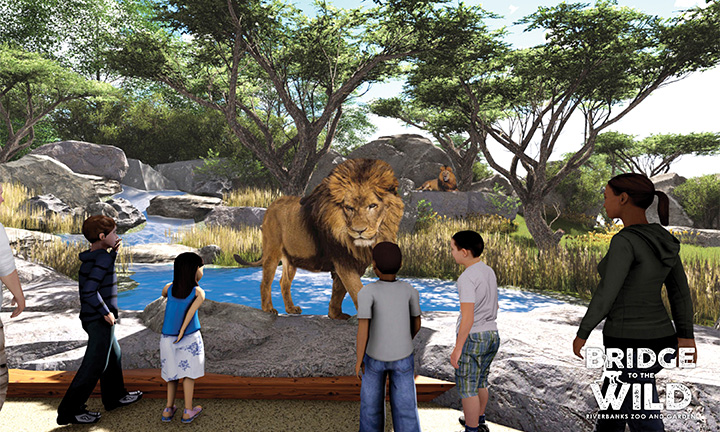The Riverbanks Zoo & Garden has always prided itself on its lion exhibit. (Photo by Caleb Deaton/Carolina News & Reporter)
Greg Peccie begins his day like any other at Riverbanks Zoo & Garden. The director of animal care meets with animal curators to check all the animals, make sure everyone has their assignments for the day and is prepared to give medication throughout the day to the animals.
“We have to feed them, we have to clean up after them (and) we have to provide for their mental stimulation,” Peccie said. “It’s a lot. It’s a lot.”
However, recent mornings have found Peccie and fellow curators having one fewer animal to take care of. A few weeks ago, Zuri, the cornerstone male lion, died at the age of 20. He had been with Riverbanks since he was a cub in 2005.
Zuri became the oldest male lion in North America, living almost twice as long as the average male lion in the wild. In his old age, he became more and more reliant on his lionesses, Thabisa and Lindelani.
Zuri’s passing comes in the midst of Riverbanks’ major renovation and upgrade project called Bridge to the Wild. The Bridge to the Wild is a two-phase, $172 million project that Perron described as bringing “the visitors of Riverbanks as close to the animals in their natural habitat as possible.”
Some of these new additions are already finished. Things like a new white rhino exhibit, a Komodo dragon breeding facility and a reimagining of the Aquarium & Reptile Conservation Center can be seen today.
More planned additions include a gondola over the Saluda River that leads to a primate forest walkthrough, a preserve for regional animals such as black bears, red wolves and bald eagles and a restaurant overlooking the Saluda. Those expansions should be completed and open to the public by summer 2025, said Matt Perron, Riverbanks’ public relations manager since February 2023.
The other proposed renovations include new exhibits for closer encounters with lions, tigers and baboons. Such an exhibit would have been a wonder for visitors who wanted to get an even closer look at Zuri.
Animal curator LaBorde Coble helped care for Zuri and his lionesses for the past two years.
“He was very laid back in his old age,” Coble said. “If we were throwing treats, he’d usually be the last one to go get one. He loved following his ladies. So if we needed him to go to a certain den or a certain part of the exhibit, we would get the ladies to go there first and then he would follow.”
But despite his old age, Zuri still had the roar of a lion.
“Every morning when you came in, he was roaring,” Perron said.
“It’s a really tough loss,” he said. “The keepers, I know, miss him a lot. Everyone. All these guys (animals) get their own personality that you can really start to see as you work with them for time and time again.”
Now the zoo needs to find a new male lion, a process that involves many moving parts.
The process involves constant contact between Riverbanks officials, the Association of Zoos & Aquariums (AZA) and the Species Survival Plan Program within the association, according to Peccie and Perron. The non-profit organization, founded in 1924, is designed to advance conservation, education, science and recreation within zoos and aquariums.
According to the association’s website, each program in the system manages the breeding of a select species or sub-species by collaborating with the association’s Population Management Center, Reproductive Management Center, program leaders and institutional representatives from each participating institution to develop a breeding and transfer plan. Riverbanks has played a notable part in the lion program, with Zuri himself fathering 13 cubs who have been relocated elsewhere.
“And what the AZA does is kind of keep track of all the offspring, so you’re not breeding cousins or breeding brother and sister,” Perron said. “They have a log of all offspring and families. So yeah, the AZA is kind of like Chuck Woolery with Love Connection.”
The zoo hopes to find a male lion that is young, and one that both the zoo and the Species Survival Plan agree will help maintain a healthy and genetically diverse and stable population of lions in North America. This is not an easy or quick process, however.
Peccie compared the process involving the program almost like a game in constant flux. The needs of the many member zoos are always changing. And sometimes other zoos need the same thing at the same time.
“I may need to be in a position where either they go to another zoo and another animal comes here, or maybe we just hold on to them,” Peccie said. “And then also I can tell them we now have an empty space, or we now have the ability to send these two girls out, and then we totally have an empty space, and we can start over. Do you want us to be a breeding facility or not? And so, all of that is the chess game that comes into moving animals around.”
Coble said the needs of different zoos could affect what Riverbanks could eventually get. Since the Species Survival Plan deals with many needs, zoos may get an interesting solution to animal needs.
“So, if we have a big exhibit, and there’s a surplus of male lions and there’s not enough female lions, we could get a bachelor pride of four male lions,” he said. “So that kind of stuff, you just have to roll with it.”
In regard to the renovations, Peccie said, “I want to make sure we give them space. We give them the ability to do their natural behaviors. And for the lions, a lot of their natural behavior is sleeping in the sun and hanging out with each other.”
The current exhibit allows for that behavior, with both Thabisa and Lindelani prowling and lying in the sun. Peccie pointed out, though, that the current lion exhibit has a few elements of the past, such as a back moat for an island that used to house a monkey house and rock formations that have been there since the 1970s. Those also were hindered by the fact that visitors were a good distance from the animals, unlike other lion exhibits across the country.
Bridge to the Wild renderings show that could change.
“It’s (going to be) just a pane of glass between you and the lions,” Perron said. “They’ll be up face to whiskers, (or) I guess, nose to whiskers. … It’s going to be just completely expanded.”
While it could have been nice to see Zuri in the new exhibit, it had been tough on him the past few months. Zuri had developed a spinal condition, something Peccie contributes to arthritis and “Old Man Syndrome.” The zoo attempted to treat him, but the possibility of paralysis meant there was little his caretakers could do. It was with a heavy heart that the zoo decided to euthanize Zuri.
The lionesses have shown no notable change in their behavior since Zuri’s passing. Behavior like that is extremely hard to detect in zoo animals. Peccie and the other keepers know that while it is sad to lose a member of the zoo family, it’s simply part of the trade.
“We know that loss is going to come,” Peccie said. “We have to celebrate the wins. And with Zuri, I can absolutely say that we’ve celebrated some wins.”
A tribute video of Zuri the lion by the Riverbanks Zoo (Video from Riverbanks Zoo & Garden)
Lionesses Thabisa and Lindelani relax in the shade of the current lion exhibit. (Photo by Caleb Deaton/Carolina News & Reporter)
Lioness Thabisa soaking up the sun in front of Riverbanks visitors. (photo by Caleb Deaton)
What the proposed new lion exhibit would look like in the Bridge to the Wild project (Modified rendering by Riverbanks’ Majken Blackwell/Carolina News & Reporter)
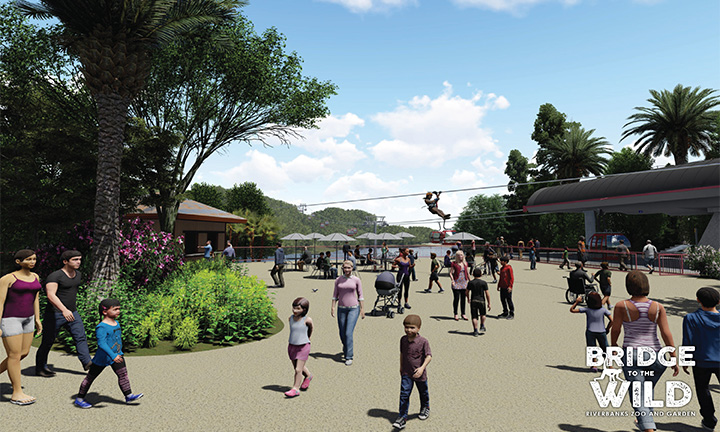
Plans for an expanded Carousel Plaza with the future gondola and restaurant near the Saluda River. (Modified rendering by Riverbanks’ Majken Blackwell/Carolina News & Reporter)
Video of Thabisa and Lindelani in their habitat and snacking on an enrichment treat given by their curators. (Video by Caleb Deaton/Carolina News & Reporter)

